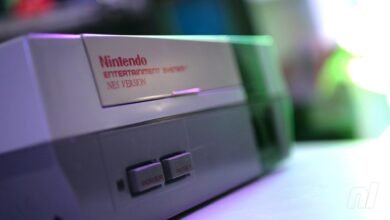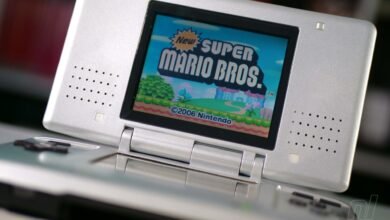Commodore’s Long-Awaited Comeback Faces Tough Odds

▼ Summary
– Commodore, once a home computing giant, collapsed in 1994 due to mismanagement, leading to its brand being exploited on low-quality products.
– The Commodore 64 was its most successful product, selling over 15 million units and becoming iconic for its affordability, graphics, and sound chip.
– Christian Simpson bought the Commodore brand to revive it sustainably, but the original company no longer exists, and key rights are held by other entities.
– Simpson faces challenges balancing nostalgia with innovation, appealing to fans while expanding the brand’s reach to recoup his investment.
– The new Commodore 64 Ultimate product blends retro aesthetics with modern tech, targeting both nostalgia and future-oriented buyers.
The once-mighty Commodore brand, a household name in computing during the 1980s, is attempting a revival under new leadership, but the road ahead is far from smooth. After collapsing in 1994 due to financial mismanagement and failed products, the company’s remains were sold off piecemeal, leading to a string of underwhelming rebranded gadgets that tarnished its legacy. Now, retro gaming enthusiast Christian “Perifractic” Simpson has acquired the rights to the Commodore name, vowing to restore its former glory with a fresh approach.
Commodore’s golden era was defined by the legendary Commodore 64, a machine that struck the perfect balance between affordability and performance. Despite its modest processor, the C64’s advanced graphics and groundbreaking sound chip made it a favorite among gamers and programmers alike. Over 15 million units were sold, cementing its place as one of the best-selling computers of all time. Simpson’s vision is to tap into this nostalgia while steering the brand toward sustainable growth, a delicate balancing act given the fragmented ownership of key intellectual property.
The challenge lies in reassembling what was lost. The original Commodore business no longer exists, and critical components of its ecosystem, such as the C64 ROMs and Amiga operating system, are controlled by separate entities. Third-party manufacturers have kept the spirit alive with clone systems, but true innovation has largely come from the fan community rather than corporate owners. Simpson must navigate these complexities carefully, ensuring that his revival efforts don’t alienate the die-hard enthusiasts who preserved Commodore’s legacy for decades.
The company’s new branding strategy leans heavily on retro appeal, positioning itself as a “digital detox” alternative to today’s hyperconnected world. The messaging evokes the optimism of early computing, promising a return to simpler, more purposeful technology. Yet this nostalgic pitch clashes somewhat with its first major product, the Commodore 64 Ultimate, a modern reimagining of the classic machine. Available in flashy gold and LED-lit editions, the hardware blends vintage aesthetics with contemporary features like HDMI output and FPGA-based simulation for improved accuracy.
Success hinges on more than just nostalgia. While longtime fans may appreciate faithful recreations, Simpson must also attract new audiences to justify the investment. Licensing deals, community engagement, and innovative hardware will all play crucial roles. Whether Commodore can reclaim its former relevance remains uncertain, but one thing is clear: the brand’s future depends on honoring its past without being trapped by it.
(Source: Wired)





